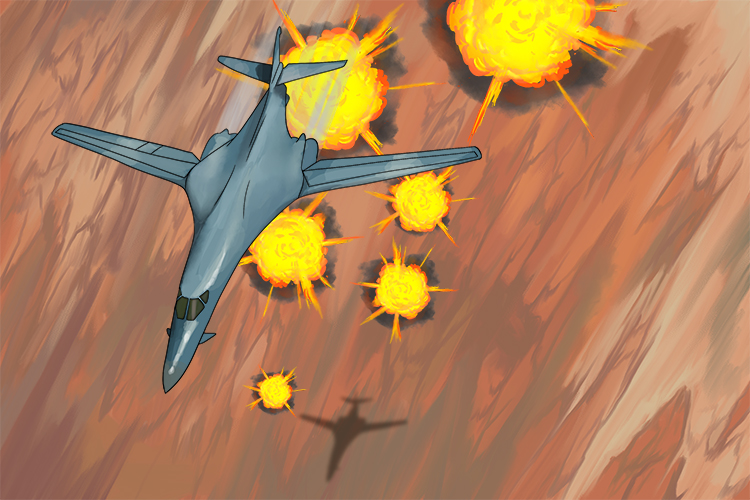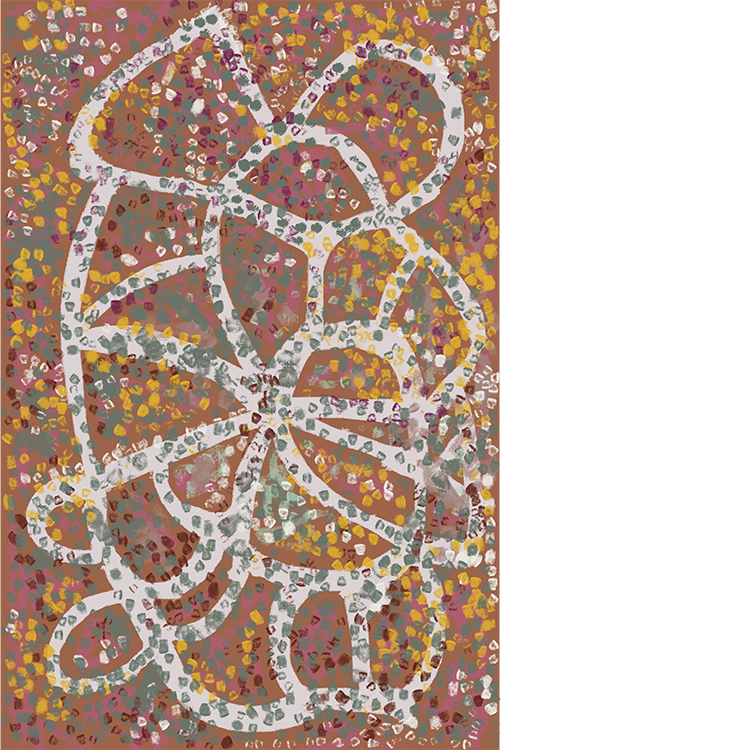Emily Kame Kngwarreye (died 1996 aged 86) – famous for aboriginal art of dots and stripes
(Pronounced em-uh-lee kame gwawr-eye)
Kngwarreye – When I go to war I paint
When I go to war I (Kngwarreye) paint. Many of her paintings look like a view from an aeroplane that has dropped hundreds of bombs onto the landscape.
Note: Her paintings were not a protest about war, but it's a great mnemonic for associating her name with her art.

The way to remember her first names is to consider that she was also famous for her stripe paintings. Imagine an emu leaves (Emily) its cage, then the other emus came across (Kame) too and dragged their feet across the paintings, leaving stripes.

Aboriginal art was created by the original inhabitants of Australia, going back 50,000 years. Art from those eras includes rock and wood bark paintings using natural materials like ground-up ochre (a soft rock containing ferric oxide, clay and sand), charcoal, clay and red soil.
Aboriginal people use art on their bodies for initiation, hunting and religious ceremonies.
Traditionally there is no empty space in their artwork. Space is filled with dots or patterns which gives a sense of movement.
Some colours have meanings: white is the spirit colour, black is night and the people, red is the land or blood and yellow the sun.
Much of their artwork is made up of dots and stripes.

A representation of Kame Colour, 1995

A representation of Emu Dreaming, 1991
Nobody before had created – Aboriginal artwork that became high-profile museum pieces




